ASTONISHING JOURNEY TO THE FOOTHILLS OF THE HIMALAYAS
30 days in Nepal were a part of our 11-month journey all across Europe, Asia and Australia. Is it safe to travel to this country? Do we need any kind of special preparation? How and where do we get visas for Nepal? Is it possible to find a volunteering position in a very short period of time? Are the Himalayas just as breathtaking as they say? Is it the truth that marijuana grows wild in Nepal? These are only some of the questions that have been bothering us for ages. Finally, we got all the answers and it's my duty to share them with you!
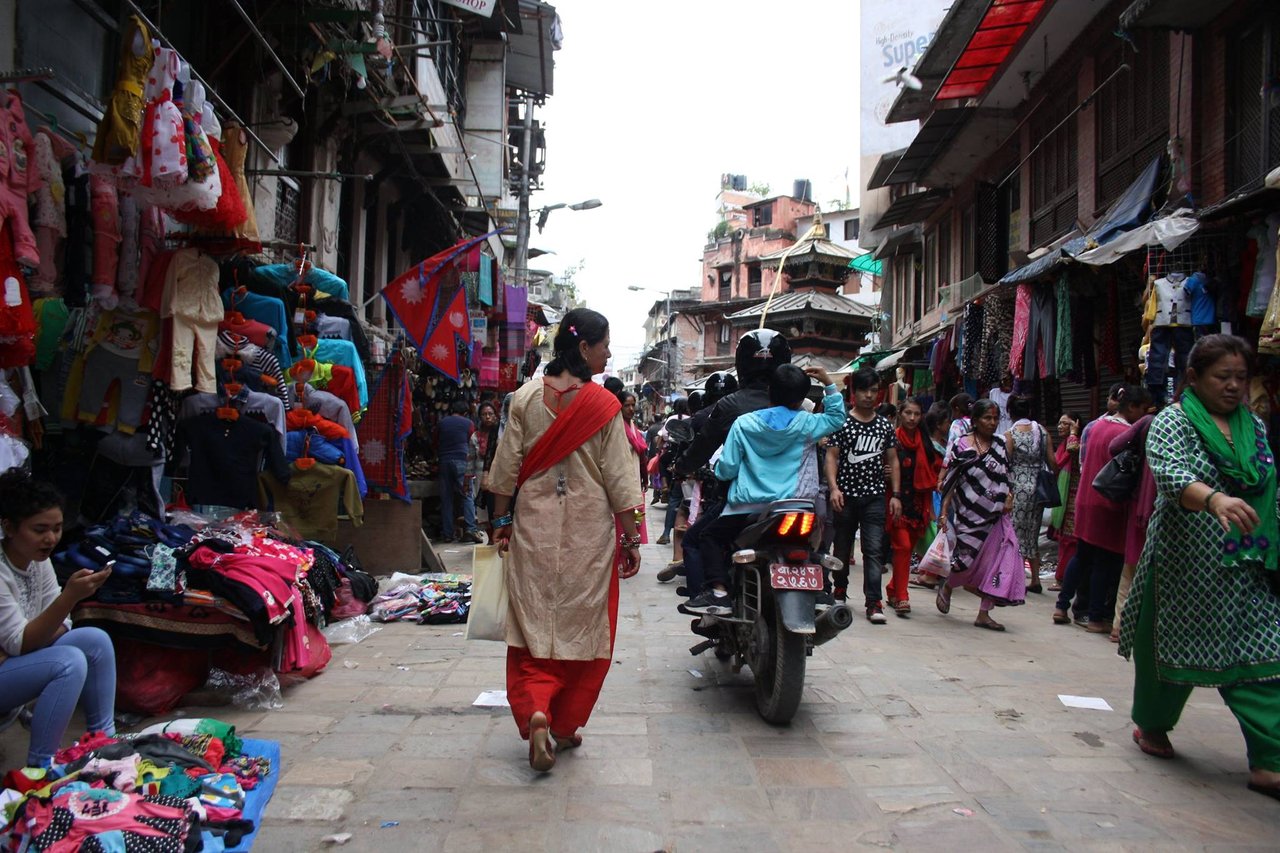
HOW DID IT ALL START: REASONS TO VISIT NEPAL
"I will shoot him!",- Kamile's father shouted when he first heard, that she was going to travel around the world with a guy he had never heard of before. Luckily, nobody died. We quit our jobs, I sold my car and the biggest adventure in our lives started. Cant's wait to hear how Kamile's dad is doing? Well, two months ago Kamile and I got married. I guess we overcame so many challenges together, that her family finally realized I might be the one for their precious daughter.
Needless to say how happy I was when my last article "30 days in Iran: The land of misleading stereotypes!" got so many good reviews. Iran is a truly exceptional country and Persians are probably the most hospitable people in the whole wide world. After a month in this land of extraordinary diversity, we finally decided to try to escape the winter and head to the South.
Why Nepal? As I mentioned in my last article, it took us a few weeks to hitchhike from Lithuania all the way to Iran. We met hundreds of fascinating people, heard dozens of captivating stories. One of those guys was Andrei Andritcu - a photographer from Moldova, whom we met in Romania. He told us about his recent trip to Nepal - a magnificent Himalayan country, located between India and China. "Nepalese people are so good, they can even touch your soul!",- he said. These few words were the only reason we needed to visit Nepal, everything else was just accessories.

WHAT IS NEPAL FAMOUS FOR?
What is Nepal famous for? It is famous for many things. For example, have you ever heard of Gurkha warriors - fiercest fighters on the Planet Earth? They originate in Nepal. Dipprasad Pun is probably one of the most well-known ones. He became famous in 2010 when he was serving in Afghanistan. Dipprasad Pun single-handedly fought off 30 Taliban soldiers. As Pun was keeping guard on the roof of a checkpoint, the attackers came at the complex from all sides with rocket-propelled grenades and AK-47s.
It took less than an hour for Pun to kill them all. He went through all of his ammo—400 rounds and 17 grenades, as well as a mine that detonated—to defeat each attacker. When he ran out of ammo, a Taliban soldier climbed up to the roof, only to be hit with a machine-gun tripod that Pun threw at him. Pun's valour was rewarded with a Conspicuous Gallantry Cross, the second highest British military decoration awarded for bravery.
Another thing Nepal is famous for is stories about Yeti - or a folkloric ape-like creature taller than an average human, that is said to inhabit the Himalayan mountains. The scientific community has generally regarded the Yeti as a legend, given the lack of evidence of its existence, but is it really only a legend? Who knows...

POKHARA: THE GATEWAY TO THE HIMALAYAS
Despite the worldwide fame of Gurkha warriors and Yetis, probably the most famous thing in Nepal is Mount Everest and a few other Himalayan mountains. Nepal Himalayas - east-central section and highest part of the Himalayan mountain ranges in south-central Asia. The Nepal-Tibet border roughly follows the line of the highest part of the range (the Great Himalayas), featuring several of the world’s highest peaks: Everest, Kanchenjunga, Makalu, Dhaulagiri I, Manaslu I, and Annapurna I.
After spending a few days in Kathmandu, Kamile and I headed towards Pokhara - the second largest city in Nepal. Pokhara is nestled in the Pokhara Valley and it is called the gateway to the Himalayas. Thousands of adventure travelers come here every month, before starting their unforgettable trekking experiences on Anapurna Circuit Trek and other famous routes.
Pokhara is divided into two parts - Lakeside Pokhara and Old City. Phewa Lake is a spectacular lake, which borders Lakeside Pokhara while Old City is the commercial hub. We were lucky enough to get a private room in the Lakeside district for around 4$ per night. According to Western standards, this price might seem extremely low. However, keep in mind that we had to put a lot of effort to find such a deal in the most touristic area of the city. If you need a detailed Pokhara travel guide, you can always check out "Things to Do in Pokhara in 48 hours", written by one of my favorite travel bloggers.

WHY VOLUNTEERING IN NEPAL WAS OUR BEST DECISION EVER?
There are three major ways to REALLY experience the local culture and meet amazing people anywhere in the world. They are hitchhiking, Couchsurfing and volunteering. We've done a lot of those first ones on our way to Iran and in Iran itself. This time we felt with all of our hearts that the time has come for some new experiences. Volunteering in Nepal was the first volunteering experience that we had outside of Lithuania.
WHERE CAN I VOLUNTEER IN NEPAL?
We came up to this idea so quickly, that we had to do all the research while sipping our over-sweetened tea in one of the lakeside cafes. The first question that came into our minds was where could we volunteer in Nepal? The truth is, finding a place to volunteer in this part of Asia is relatively easy. There are quite a few different options. Volunteers are always appreciated in these fields: childcare, educations (teaching English, etc.), special needs care, construction and renovation and so on. After a long discussion, we decided to give WWOOF a try.
WHAT IS WWOOF (WORLD WIDE ORGANIC FARMING)?
Long story short, WWOOF is a worldwide movement linking visitors with organic farmers and growers to promote cultural and educational experiences based on trust and non-monetary exchange thereby helping to build a sustainable global community. Some of the aims of WWOOF are to get the first-hand experience of organic farming and to lend a helping hand wherever needed, to help the organic movement, which is often labour intensive and does not rely on artificial fertilizers & pesticides, to have a wonderful enriching experience and a cultural exchange with locals. You can find all the information needed on "WWOOF Nepal".

"WWOOF NEPAL" HOST LIST: HOW TO FIND THE RIGHT ONE?
How did we find our host? There are 112 official WWOOF hosts, scattered Nepal. I guess the best way to find out which one is the best one for you is to read all the descriptions and listen to your inner voice. At least that's what we did. All the options are very different. Some of those farms are located high up in the mountains, others are located in much lower areas. Some farmers keep cows, goats and buffalos, while others grow vegetables.
We decided to text Mr Tara Adhikari (Host No 98). His description looked like this,- "Our farm is located between Narayani and Rapti rivers in the Western part of Chitwan, which is 23 km. from Bharatpur Municipality and 173 km. from Kathmandu. I'm a school teacher and I live with my wife and 2 kids. My wife Anjana works at home as a housewife. She looks after our kids, our fish farm and animals.
We run fish farms in the area of 2500 sq. ft. What is more, we plant seasonable crops. I need help with feeding goats and fish, watering the plants and fencing the fish pond. If you are interested, we can manage a jungle safari, elephant riding. You could also do some teaching an school. You will get an opportunity to get involved with the local community and all the knowledge of Nepali culture." Opportunity to spend some time with cheerful kids looked pretty tempting.

NEPALI CULTURE, TRADITIONS AND OUTSTANDING SENSE OF HUMOR
Are you one of those guys who are interested in finding a Nepali wife? Would you like to know how dangerous is it to travel by bus in Nepal? Are you eager to hear how we shared our bedroom with some lizards, spiders and a rat? Wanna hear what kind of work we did and how we spent our free time with this amazing local community? I am glad to share my knowledge of Nepali culture, traditions and an outstanding sense of humor.
It all started when we left Pokhara and headed South. Tara's farm was located in Shukranagar, which was located right beside the Nepal-India border. In order to reach this tiny village, we had to take two different buses. There are two kinds of buses in Nepal: so-called tourist buses and local ones. Taking a local bus is usually 3 or 4 times cheaper and you get a chance to meet some warm-hearted locals.
Traveling by local bus in Nepal might be a very memorable and unique experience as such buses usually have two times more passengers than there are seats. What is more, you might have to share your space with some farm animals: chickens, goats, etc. It is also normal to see a goat on the roof of the bus if there is no space left inside.
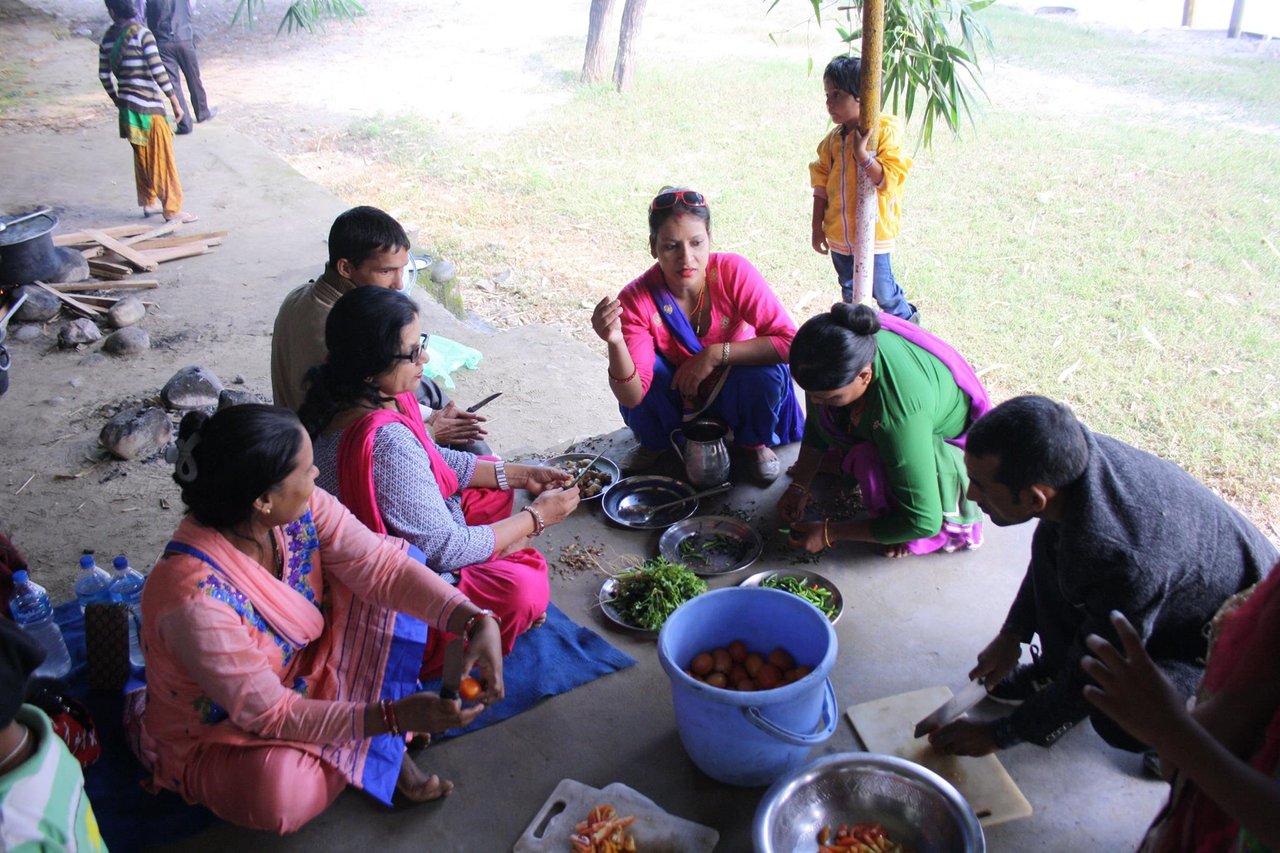
HOW TO FIND A NEPALI WIFE?
Our trip to Shukranagar was pretty dangerous. At least in Western standards. Nepal has some of the worst roads in Asia. Average speed might be as low as 20km/h, as there are no modern highways. Only narrow asphalt roads, bumpy dirt roads, serpentines, etc. Our bus lost two side view mirrors in less than five hours. Surprisingly, drivers did not stop to argue whose fault it was. They just apologized to each other and kept going. It seemed like locals could not see anything wrong in it at all. I guess they were too busy scrolling their huge smartphones or laughing and chatting with each other. We thought,- "Wow… These people look very happy..."
"Please, introduce yourselves!",- local children shouted when we finally got out of the bus. Nepali children speak English very well. Tourism is the main source of income in Nepal and their parents know that. This is why they teach their little ones from an early age. Children of Shukranagar were not an exception. One of them even helped us to find our host Tara Adhikari. We were extremely happy to finally meet him. This village became our home for the next two weeks.
We were not the only volunteers at this place. There was also a guy from the Czech Republic and a cute couple from France. We were having our first dinner together when Czech Honza and Tara started a discussion about love. Honza was single, so Tara advised him to find a Nepali wife. "There is a young and beautiful teacher at our school. You should marry her!",- he said. Honza did not have a sense of humor so he started shaking,- "I don't know what to say! I don't even know her!" Tara laughed for a moment and then he stopped. What he said next was very beautiful indeed. He said,- "All you have to say is: I can live without water, but I can't live without you..."

THIS VILLAGE BECAME OUR HOME FOR THE NEXT TWO WEEKS
Our room was tiny and the bed was not too comfortable at all, but our hosts were so kind that we appreciated everything they shared with us and every second we spent together. Unluckily, we did not have a mosquito net. There are all kinds of insects in Nepal. Probably this is why in every room you could find at least a few lizards climbing on the walls and hunting them. We also had some more roommates. There was this spider, which was as big as Kamile's palm and a rat. Both of them decided to leave the next day. We have only heard them walking around for the first night.
During our stay, we had some kind of everyday routine, which was not too strict. Every day we woke up early in the morning and had a glass of sweet tea together. After this, we helped Tara to do all the farm work. The second half of the day used to be our free time, during which we explored the town and nearby area, spent time with locals or at school, played with children, went fishing and so on. Sometimes Kamile was asked to help Anjana at her store or we both helped Tara at the school where he was working as a maths teacher.
My favorite part was spending time with children. During our first week, we even went on an excursion to the Chitwan National Park. Technically, there is still a caste system present, but children didn't seem to care. They did not have "popular kids" and "unpopular kids", no kid felt cooler than the others. They were all like the fingers of the same fist. I grew up in quite a different environment. Absence of bullying at this school looked unbelievable to me. After a few days with these children and all Shukranagar community, in general, I realized that volunteering here was probably the best decision we have ever made. It looked like all these kind and cheerful people charged our "life force batteries" and despite all the deprivation and other things in this country, we left Nepal being healthier, happier and more alive than we had ever been before.

FREQUENTLY ASKED QUESTIONS ABOUT NEPAL
How much does Nepal visa cost? What vaccinations do I need? What is the best time of the year to go to Nepal? What are the money and costs there? There are quite a few things you should know before going to this country. Remember, Nepal is not the best choice for the first time travelers. You should do some research even if you are an expert. I guess you are thinking,- "...Blah blah blah!" Yea, probably you are right. Everything will be just fine anyways. However, you should at least know these few things.
IS IT SAFE TO VISIT NEPAL?
In political terms, Nepal is more stable than it has been in years, and crime is not a major risk for travelers. It makes sense to consult local and international news sources before you travel to Nepal so you are aware of any issues. Statistically speaking, the most dangerous thing you'll do in Nepal is simply taking public transport along the country's busy roads. Whilst the overwhelming majority of Nepalis couldn't be any nicer, there are some who are impressively inventive in their range of imaginative scams. Watch out for the deals offered by gem dealers that involve you buying stones to sell for a ‘vast profit’ at home.
HOW MUCH DOES NEPAL VISA COST?
Visas are available on arrival at the Tribhuvan International Airport in Kathmandu and at all land border crossings that are open to foreigners, as long as you have passport photos on hand. Your passport must be valid for at least six months and you will need a whole free page for your visa. 15/30/90 days Nepal visas cost US$25/40/100. Do not forget to bring enough USD cash. Indian passport holders do not need a visa to enter Nepal. Visa extensions are available from immigration offices in Kathmandu and Pokhara only and cost a minimum US$30 for a 15-day extension, plus US$2 per day after that.

HEALTH CONCERNS WHEN TRAVELING TO NEPAL
There are two things you should be aware of while traveling in Nepal: altitude sickness and food/water safety. Altitude sickness can be a real concern for trekkers. Although the cities of Kathmandu and Pokhara are at reasonable elevations, the mountain trails can climb sharply to dangerous levels. I can't tell much about it as my lovely woman and I haven' done any trekking. On the other hand, I do have some experience with food poisoning and similar staff. Like in many parts of the world, tap water is not safe for consumption and food preparation practices are held at a lower standard than most of us are used too. Just keep in mind that different bacteria can, unfortunately, make you ill. Just like they can make Nepali travelers ill when they visit your country.
MONEY AND COSTS
Nepalese Rupees are the official currency of Nepal. Cash is definitely king, so you’ll want to stop at an ATM to be prepared. About 75% of the restaurants and attractions we visited were cash only, as were many hotels. Even where credit cards are accepted, you’ll be paying a 3% surcharge for the privilege. Nepal is an incredibly inexpensive place to visit. We had very comfortable hotel rooms including private bathrooms, hot water and Wi-Fi for $8. As I've already mentioned, the cheapest one was less than $4 per night. If you read my last article about our journey to Iran, you probably know that couchsurfing.com was our saviour in that country. I am not sure if it works fine in Nepal too.
WHERE TO FIND SOME MORE INFORMATION?
First of all, I would like to invite you to watch our video called "Volunteering in Nepal. Organic farming (WWOOF)". You will get a feeling of what it was like to live in this colorful country. Also, you should check out another Youtube channel called "Gabriel Traveler". It belongs to Gabriel Morris - my all-time favorite Youtuber. This guy traveled for the last 30 years. Trust me, he has a lot to say about Nepal and some other countries of that region. Finally, everyone knows "Lonely Planet". It's not a secret that it can be a good source of information for everyone planning their trip to the Himalayas.

THE FUNNIEST MOMENT WE HAVE EXPERIENCED IN NEPAL: DANCING NEPALI STYLE
It was one of those lovely mornings when you wake up and you feel like your life could not get any better. The sun was shining bright and everything was perfect! Like every single morning, Tara made us some sweat tea: 50% water/ 50% sugar. During our stay, we noticed Tara liked sugar A LOT. He used to say,- "I have a big belly. It is probably because I eat too much rice and vegetables"… Because of vegetables… :D Yeah, right!
After breakfast, Tara told us that it is going to be a day off. It was a very special day in Shukranagar village. Teachers and children organized some kind of festival. The main purpose of it was collecting funds for the construction of a new library. We were invited too. All the participants were wearing their finest clothes. Tara's beautiful daughter Akriti was preparing to participate too. Kamile was responsible for changing Akriti's hairstyle. Czech Honza and I helped to set the sound system. Finally, the party started.
Oh my! What a spectacle! All the girls were so elegant and boys looked so confident… I was afraid that the event might get a little monotonic, but it didn't. There was a little bit of both: traditional and modern dances. I don't know if you know what is "Tectonic", but 10 years ago this dance style was a pretty big thing in some parts of Europe. It is difficult to find the right words to express how amazing it was to watch all those skinny kids dancing with such infinite energy... :D
Unexpectedly, one guy introduced himself. Tara explained that he was a wealthy businessman and a respected member of their community. He said,- "If Kamile will participate in the festival, I will donate a big amount of money". "All right!",- said Kamile joyfully and started dancing. Suddenly, one charismatic man decided to join her and show us his special dance moves. That was a lot of fun to watch. You know what? You should see it by yourselves… -> "Nepali style".
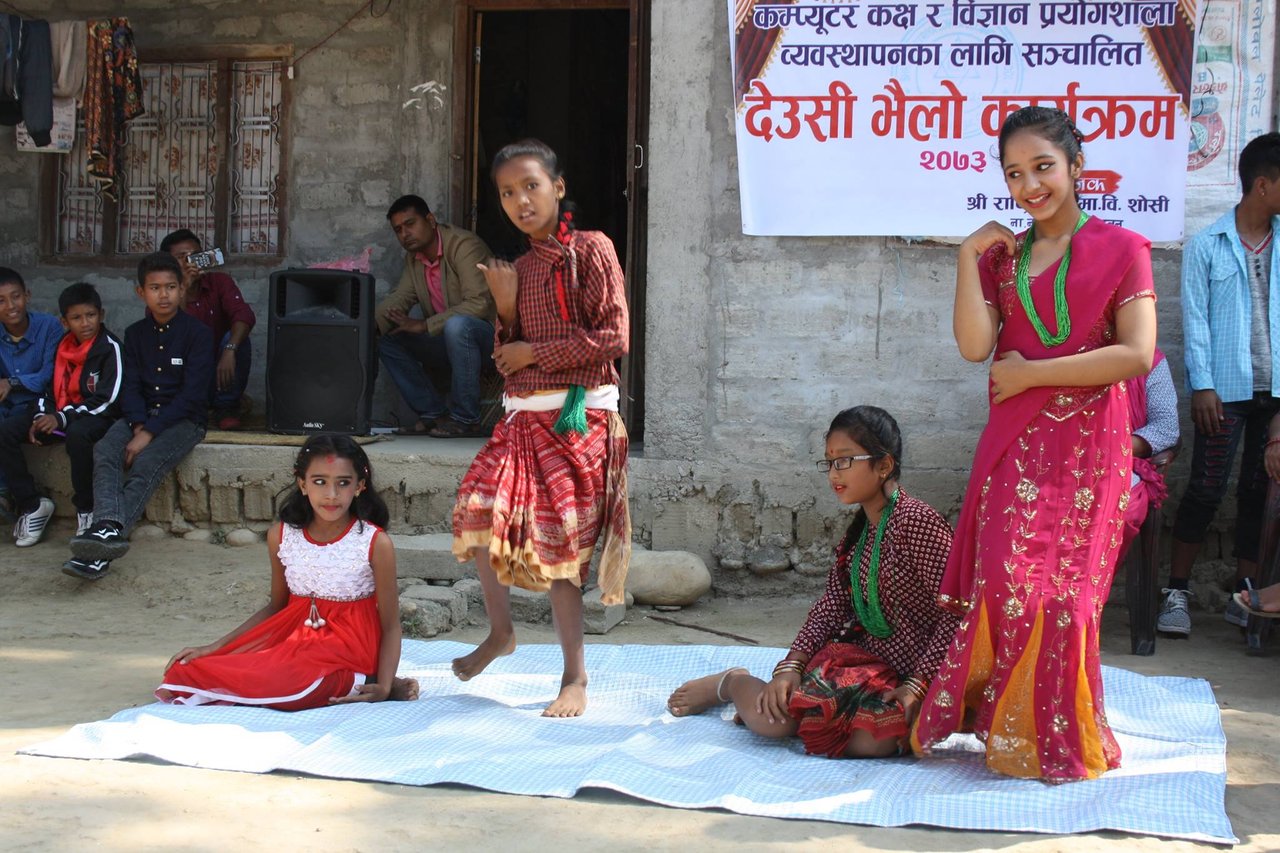
INTERESTING FACTS ABOUT NEPAL!
- Nepal has the only living goddess in the world, the Kumari. Kumari means virgin in Nepali and is the tradition of worshipping young pre-pubescent girls as manifestations of the divine female energy in Hindu religious traditions.
- Marijuana plants grow in gardens, on the side of the road, in ditches, on mountainsides, pretty much everywhere in Nepal.
- Nepal’s variation in altitudes is extreme. It boasts the highest valley in the world (Arun) as well as the deepest gorge (Kaligandaki), with altitudes ranging from a scant 59 meters to Everest’s world-topping 8,848 meters.
- With the variation in altitudes comes a variation in climates. Traveling from the south to the north, in a span of only 100 kilometres you will go from hot tropical conditions to bone-chilling arctic-level cold.
- With almost 870 different species of birds, Nepal has more than the continents of North Africa and Europe combined. They are home to eight per cent of the bird species of the world. Nepal’s national flag is the only one in the world that isn’t a rectangle or a square. It has two triangles; the top with a moon and the bottom with a sun. The triangles represent not only the Himalayas but Nepal’s two major religions-Hinduism and Buddhism.
- Through all its history of border expansion and contraction, Nepal has never been colonized and ruled by foreigners. Therefore, Nepal celebrates no Independence Day. It is the year 2072 in Nepal. They celebrate the new year on April 13th.
- The people of Nepal greet one another not with handshakes, kisses, or hugs but rather by placing their palms against one another’s, bowing their foreheads, and saying “Namaste” which translates to “I salute the God in you”.
- Nepal Is The Birthplace Of Siddhartha Gautama (Buddha). Followers of the Buddhist religion believe that Buddha was born in Kapilvastu, Lumbini in Nepal. According to tradition the exact birth date of Buddha isn’t known but is presumed to have occurred either in 563 or 480 BCE.
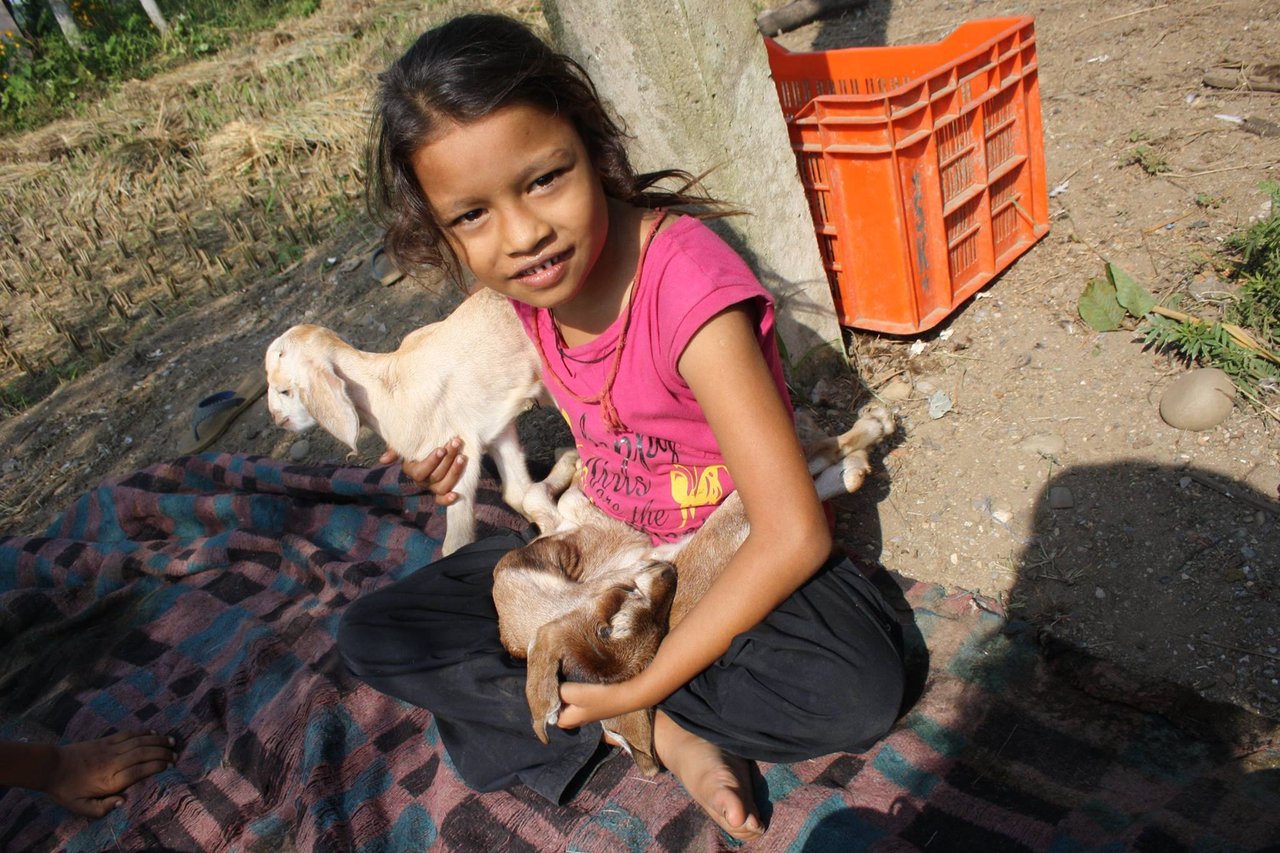
THE UGLY TRUTH
You might be thinking,- "This guy must be an idiot! First of all, he wrote a positive article about Iran. Who writes positive things about Iran? Only crazy people do! Secondly, he is telling us that Nepal is some kind of heaven and there are only butterflies and rainbows not only in this particular country but in the whole wide world..." I must say, guys, that if some of you really think like this, there is some truth in your thoughts.
Sometimes I do hide some ugly parts of the story. Probably, because I love all the people I meet in my travels and I don't want to hurt their feelings. Another reason is, some of my trips happened a long time ago. Time has an immense power to erase some of your memories. I feel lucky because in my case, time erased only the worst ones. However, I do remember all the good things as if they happened yesterday.
There is also "the dark side of the moon" when it comes to Nepal. I have already mentioned that it is not the best place for first time Western travelers. When Kamile and I first came to Kathmandu we were shocked. Our hotel was located far away from the city centre and touristic areas. What we found was piles of rubbish everywhere, dozens of half-dead dogs on every corner, old and sick people sleeping right on the sidewalks.
There was so much dust in the air that it was difficult to breathe. We saw a man selling meat. It was so hot that the meat was baking in the sun. Blood was dripping on the ground right under the table. Children were playing in that blood pool. When we tried to find a place to eat, it was not as easy as we expected. Why? Let's just say European and Nepalese hygiene standards do not have much in common.
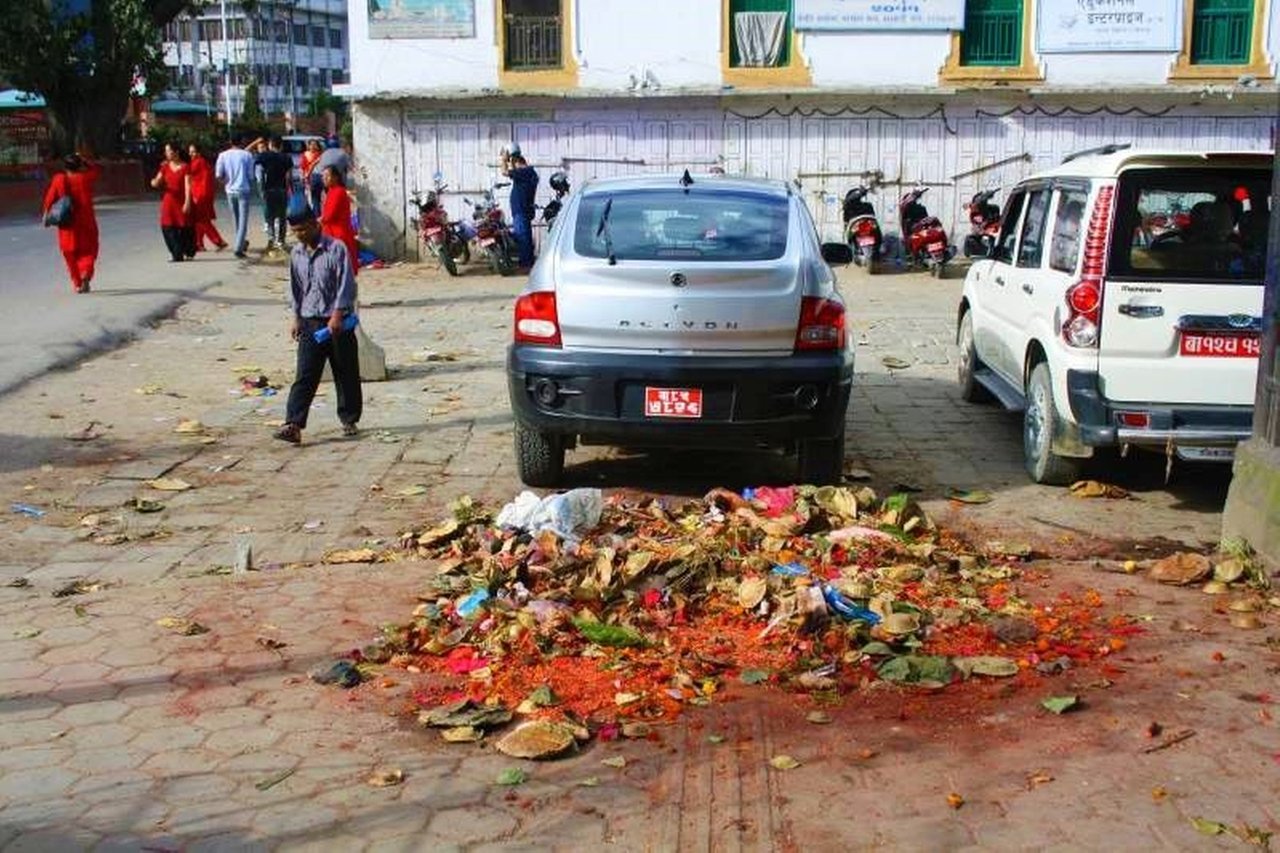
When we took a bus to Pokhara there was another incident. In Nepal there are always two people working in the bus: the driver and the ticket seller. It took us ages to get to Pokhara. The average speed was around 20-25 km/h. One boy needed to go to the toilet. The driver did not want to stop so the the ticket seller opened the door, picked up the child and told him to do his thing. The wind was blowing in such direction that all the urine came back in through an open window.
There was another situation that got stuck in my mind. Kamile and I were in a park. We noticed a boy who was eating some kind of candies and throwing all the packages right on the ground. We asked his teacher why he did not tell the boy to stop. "What shall he do? We do not have rubbish bins anywhere in this area". Do you understand what I am trying to say? Nepalese culture and their way of understanding things is so different, that sometimes you might feel like your head is about to explode.
I could talk about these kind of things all day long. Now you know why I have warned you that Nepal is not the best choice for the first time travelers. Despite all the good and beautiful things, it can bee incredibly shocking. Especially for "5 star all inclusive" type of travelers. Was it difficult to get used to it when we first came to Kathmandu? Hell yea. If you only plan to come to Thamel District, which is something like a Nepalese tourism Mecca, you might be ok. However, those of you who are willing to see and experience the true Nepal, should prepare themselves for some serious heartache as there is so much poverty.

I sincerely believe that it is extremely important not to be a too positive or too negative when storytelling. Actually, what I just told you about is not necessarily a bad thing. It is how it is and it's called LIFE. Nothing in this world is 100% good or 100% bad. Everything is just in between those two. Those 4 weeks in Nepal shook our world. What does it mean to be rich? Does it really have anything to do with money? What is the main source of happiness? How is it possible, that some of the poorest people I have met in this journey, were also the happiest ones?
Nepal is a land of contrasts. Is it really as extraordinary as they say? Yes, indeed. It was a totally different world from what I have ever experienced before. It has a magical power to change one's opinion of what's important in life and teach him that you can have so little and so much at the same time. I would definitely recommend a documentary called "Living on a dollar per day". Just do it and you will understand what I'm trying to say.
Do you have plans to go to Nepal in the near future? Do you have some more questions you would like to be answered before this adventure? Check out our Youtube channel "Invisus Mundi". Just type "Nepal" in the search box. Last but not least, you are more than welcome to message me on Facebook anytime. I will be more than happy to help you! If you are interested in volunteering, you can contact Tara Adhikari directly!
Yours,
Tautvydas! (Tot)
DID YOU ENJOY THIS ARTICLE?
I WOULD APPRECIATE YOUR SUPPORT!
DELEGATE SOME STEEM POWER!
1 SP | 2 SP | 3 SP | 5 SP
10 SP | 30 SP | 50 SP
100 SP | 200 SP
500 SP


